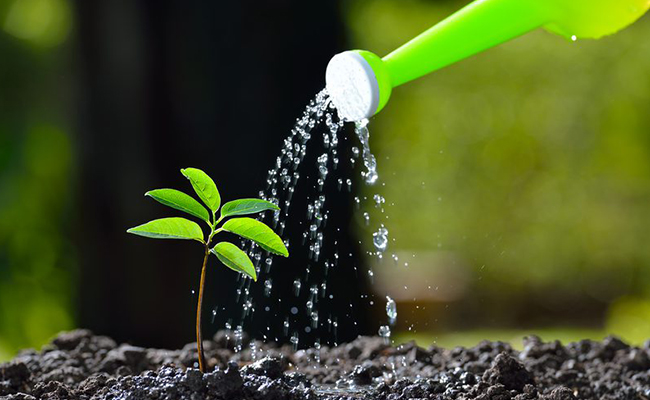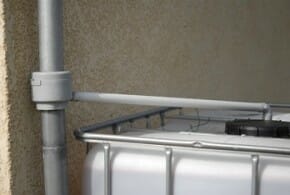
Have you ever voluntarily “forgotten” to water your vegetable garden on certain evenings, grumbling about what can sometimes be considered a “chore” or a waste of time?
Because I do! I was tired of going back and forth to fill the watering can , also tired of devoting too much time to it. So this year, with a few investments, I decided to improve my irrigation system. From the recovery of rainwater to its distribution in the vegetable garden, here is my installation.
Rainwater to water the vegetable garden and nothing else!
I only use rainwater in the vegetable garden ! Gift from heaven and yet much better than that delivered by the tap. For me, the latter is indeed very (too) calcareous while the recovered water has not yet been loaded with mineral elements (it does so by reaching the groundwater).
The recovery of rainwater is simple , but I am forced to recognize it, requires a minimum of investment (which is quickly profitable).
- Locate the gutter that drains water from the largest area of your roof.
- Cut it to install a bypass device to the storage tank.
- Personally, I invested in two tanks of one cubic meter each, from the recycling sector of the food industry and each connected to a separate gutter.
- Note that I could have paired them. I chose to dissociate them to install them rather on two distinct constructions of my garden so as to have several water points.
- The water must be cleaned upstream of leaf residues and other impurities.
- A strainer installed at the start of the descent will retain the largest pieces (such as leaves) while the bypass system includes a sieve which retains the smallest.
- It seems important to me to specify here that the tank must not be installed at the foot of a bitumen roof or involving a risk of water contamination.
An improved distribution system or the art of not making any more effort!
So far, I had stopped there. And as I wrote above, it quickly became a chore as the vegetable garden expanded. I even managed to avoid some evenings the “chore” of watering, for lack of desire to fill the watering cans in the tank, then to carry them and to go back and forth between the water point and the plantations. Not to mention the time it took.

An effort and a saving of time that I decided to correct this year. So I invested a little more.
First step (which requires some basic knowledge of electricity), I pulled a line and installed an external socket and a small switch (protected by a 30 mA fuse) in the immediate vicinity of the tank, itself placed against my garden shed. I can now dive into it and permanently leave a small cellar drain pump that I operate using the switch and which will draw water and provide it with sufficient flow to reach any corner of the vegetable garden ( and even further, if necessary).
Second step, I acquired a wall-mounted hose reel equipped with a 20 meter long hose (there is also a longer version). Attached to the wall using 4 pegs and screws, I simply had to provide it with a clearance of 50 cm on either side because it swivels 180° to accompany all my movements in the garden.
Directly connected to the outlet of the pump, so now I just have to turn on the pump and unwind the hose to the desired length. And as the reel is frankly well designed, it is possible to block the unwinding of the hose by exerting a slight pull until you hear a click and to unlock it, if necessary, to move around for example, by pulling slightly again. The winding is done automatically (it is better to accompany it anyway!) without having knots forming or the slightest effort to provide.
In short, watering is now practical, quick to implement and store! I can not wait for summer !
If you also want to improve your watering in the vegetable garden
here are some references of the material used:
I bought the tank from a company specializing in the recycling of industrial equipment. As written above, it comes from the food industry and contained soy lecithin, a non-toxic product. After a good cleaning and rinsing with clear water, it is quickly operational. Large DIY stores also sell them, at a higher price.
The system for diverting water to the tank can also be found in large DIY stores, for around fifteen euros. It is, however, all plastic.
The pump is a “no name”. The choice is many. Compare the price (of course!) but above all the delivery rate. 6,000 liters per hour is enough for the intended use, unless your garden has a steep drop.
I finally chose the auto reel reel, brand Hozelock , marketed in DIY superstores. I used a length of 20 meters but there are versions in 30 and 40 meters, just like a “micro” (10 meters) is specifically designed for balconies and small gardens. It is sold fully equipped (hose, fittings, lance, etc.) and it is solid material that is easy to install. (25 year guarantee for the pipe)
